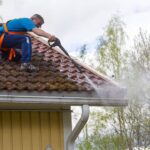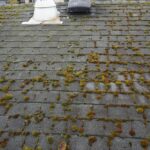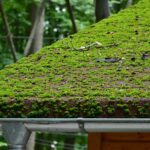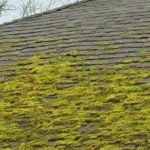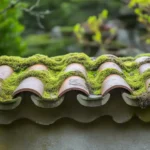Every homeowner dreads the moment when they discover a leak in their roof, especially around the vent pipe. The sight of water stains on your ceiling can send you into a frenzy, considering the potential damage and repair costs. Learning how to fix roof leaks around a vent pipe is essential for maintaining the integrity of your home and preventing further problems.
In this comprehensive guide, we will walk you through the steps to address this common issue, ensuring your roof remains leak-free. Let’s dive into the details to understand how you can tackle this pesky problem head-on.

Understanding Roof Leaks
What Causes Roof Leaks Around a Vent Pipe?
Roof leaks, particularly around vent pipes, are primarily caused by deteriorating materials, poor installation, or damage from external elements. The flashing, which is the metal or plastic shield around the vent pipe, can become worn over time, leading to leaks. Additionally, severe weather conditions, like heavy rain or strong winds, can exacerbate these issues.
Signs of a Leak
How do you know if your roof is leaking around the vent pipe? Look for water stains on your ceiling, damp spots on walls, or a musty smell in your attic. These are clear indicators that water is seeping through your roof, likely around the vent pipe.
Tools and Materials Needed
Before starting the repair, gather the necessary tools and materials. You’ll need a ladder, utility knife, roofing nails, roofing cement, a hammer, flashing tape, and a new vent pipe boot. Having these items on hand will make the repair process smoother.
Step-by-Step Guide to Fixing Roof Leaks
Step 1: Safety First
Before climbing onto your roof, ensure you have a sturdy ladder and proper footwear. It’s crucial to prioritize safety to prevent accidents. If you’re unsure about climbing onto your roof, consider hiring a professional.
Step 2: Inspect the Vent Pipe
Examine the area around the vent pipe for any visible damage or cracks in the flashing. Identify the source of the leak, which will guide you in applying the appropriate fix.
Step 3: Remove Old Flashing
Using a utility knife, carefully cut away the old flashing and any damaged materials around the vent pipe. Be cautious not to damage the roof shingles in the process.
Step 4: Install New Flashing
Once the old flashing is removed, place the new flashing over the vent pipe, ensuring it fits snugly. Secure it with roofing nails, ensuring it is tightly fastened to prevent future leaks.
Step 5: Apply Roofing Cement
Apply roofing cement around the edges of the new flashing to seal any gaps. This will provide an extra layer of protection against water infiltration.
Step 6: Check for Gaps
Inspect the entire area for any remaining gaps or potential weak spots. Use flashing tape to cover these areas, ensuring a tight seal.
Preventive Measures
Regular Inspections
Conduct regular inspections of your roof to catch potential issues early. This proactive approach can help you avoid significant repairs down the line. Learn more about roof maintenance to keep your home in top shape.
Maintain Roof Ventilation
Proper ventilation is crucial for preventing moisture buildup under your roof, which can lead to leaks. Ensure your attic and roof vents are functioning correctly.
When to Call a Professional
If you’re unable to fix the leak yourself or if the damage is extensive, it’s best to call a professional roofer. They have the expertise and tools to handle complex repairs and ensure your roof is leak-free.

FAQs
Can I fix a roof leak myself?
Yes, minor leaks around vent pipes can be fixed with the right tools and materials. However, if you’re uncomfortable with heights or unsure about the repair process, it’s best to hire a professional.
How often should I inspect my roof?
It’s recommended to inspect your roof at least twice a year, ideally in the spring and fall, to catch any potential issues early.
What is the cost of repairing a roof leak?
The cost varies depending on the extent of the damage and whether you hire a professional. DIY repairs can be more cost-effective, but professional repairs provide peace of mind and a warranty.
For more tips on maintaining your roof, visit our page on preventing roof leaks. Additionally, learn how to deal with roof discoloration to keep your home looking its best.
This article contains affiliate links. We may earn a commission at no extra cost to you.




